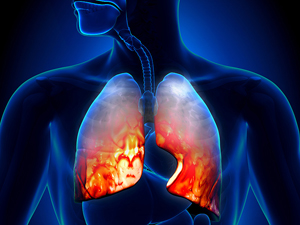New Delhi, Jul 9: Pollution, excessive smoking and other factors contribute towards lung infections, some of which can also prove fatal.
A team of researchers, including one of Indian-origin, have unfortunately found that 2015 recorded a total of 16 million cases globally of a fatal lung infection called Respiratory Syncytial Virus (RSV).
India, along with China, Nigeria, Pakistan and Indonesia, is a major contributor.
RSV is a common and highly contagious virus that infects the respiratory tract, causing breathing difficulties and wheezing in most children before their second birthday.
The study, reported in the journal Lancet, noted that there are more than 33 million cases of RSV infection in children under five each year worldwide.
"We are at an opportune time to step up efforts to prevent RSV infection in young children. With more than 60 candidate vaccines in clinical development, it is likely that an RSV vaccine will be available in the next 5-7 years," said lead researcher Harish Nair, Professor at the University of Edinburgh.
With approximately three million children admitted to the hospital each year with the virus, it is estimated that more than 115,000 children under five are dying each year from complications associated with the infection.
Almost half of those who die in hospital are younger than six months old and more than 99 percent of deaths occur in developing countries. Half of the RSV deaths in these countries occur outside the hospital, the study reported.
The findings highlight the pressing need for affordable treatments and vaccines as a priority to combat the virus.
For most babies and young children, RSV causes nothing more than symptoms of a cold but in some cases, however, it can lead to severe lung complications such as pneumonia or bronchiolitis.
"Our findings will provide better evidence to inform global funding priorities to accelerate vaccine development. It will assist policy makers and experts prepare for early introduction of this vaccine in developing countries," Nair added.
For the study, the team analysed data from 329 studies of RSV infections worldwide.





Comments
Add new comment